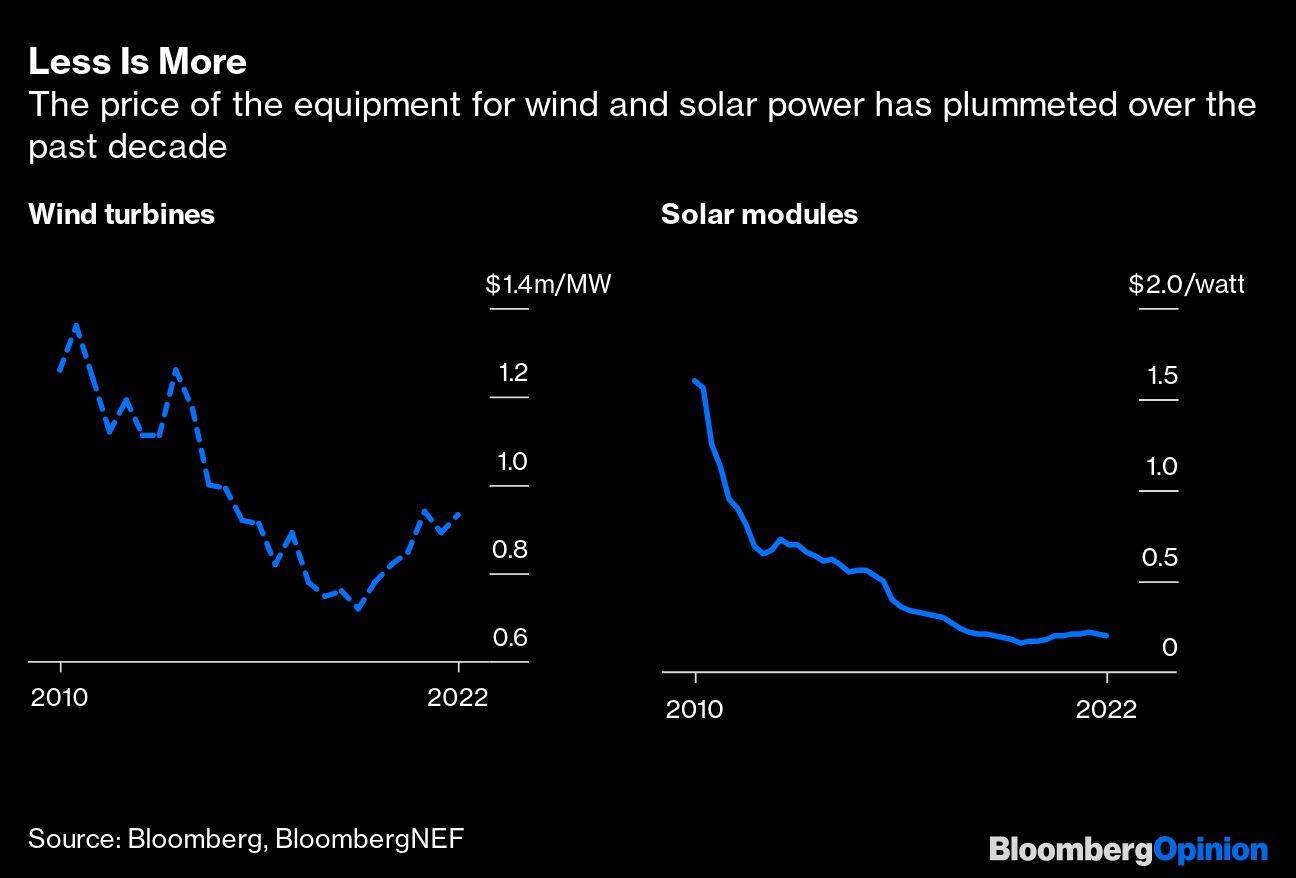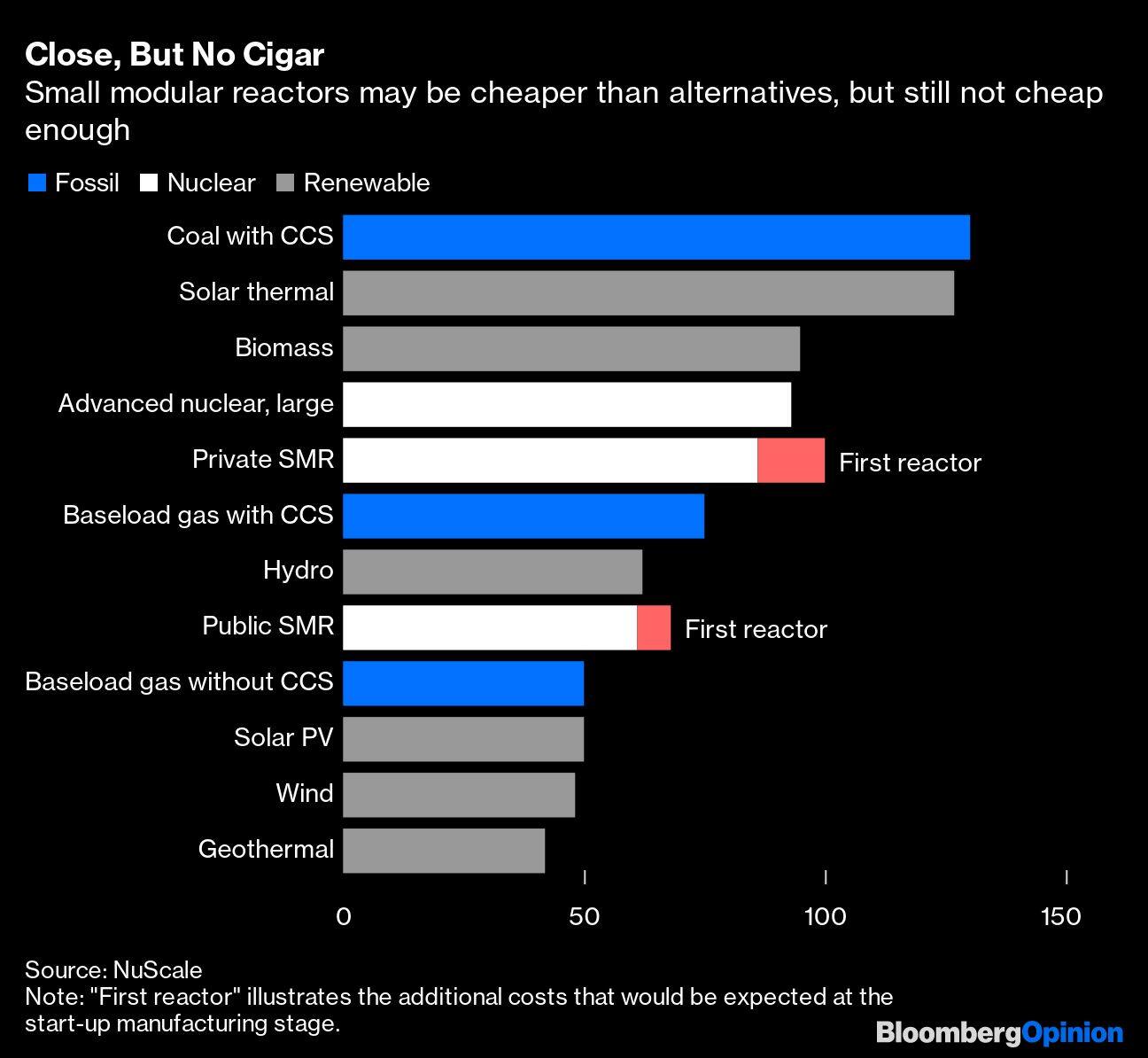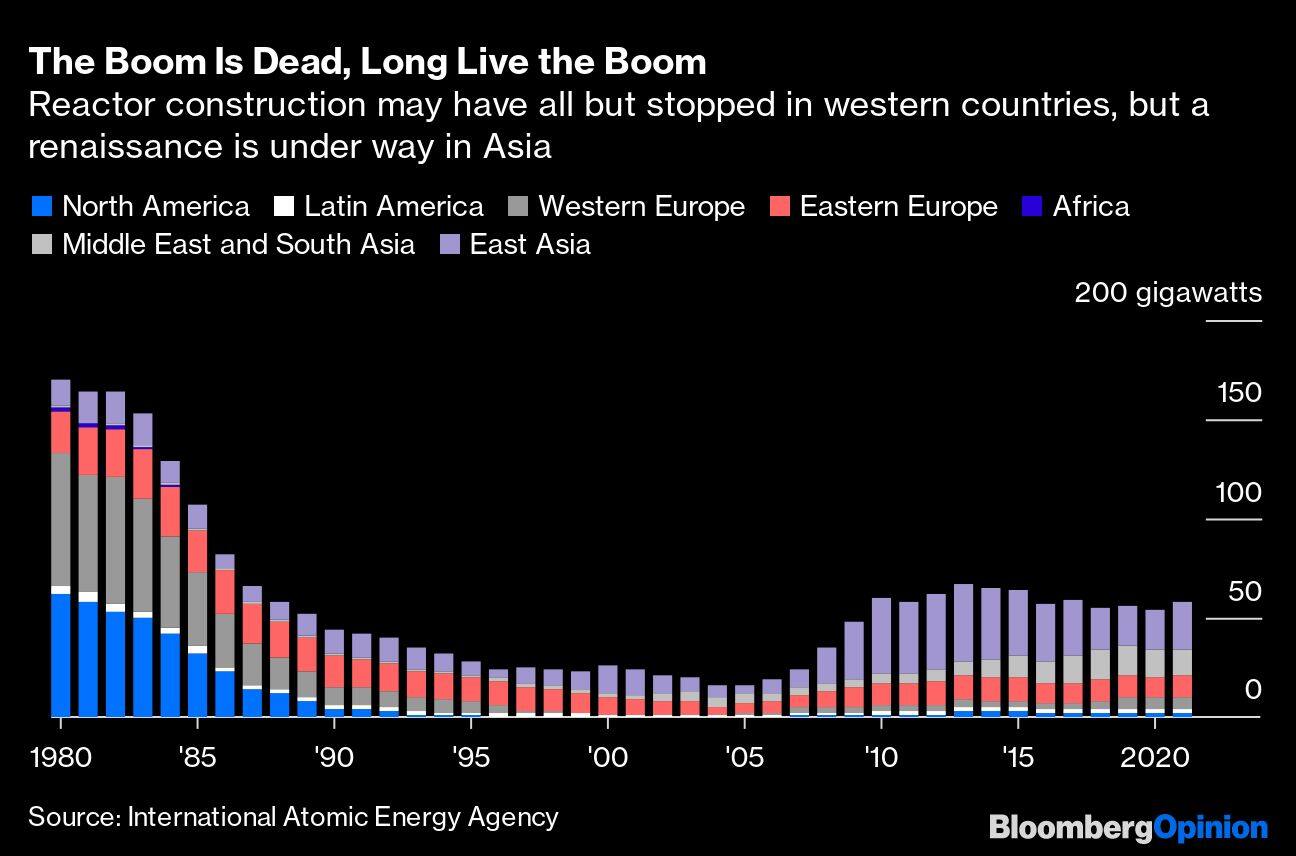



Why aren’t passenger jets these days all flying-wing aircraft, like the B-2 Stealth Bomber? In theory, seating passengers, cargo and fuel inside one enormous wing offers compelling advantages. The design would be lighter and provide more lift than a conventional aircraft, offering considerable savings on fuel, the biggest expense for airlines.
The answer lies in the benefits of path dependency. Every airport in the world is designed around the single wing-fuselage that’s predominated for nearly a century. Critical safety protocols have been built upon decades of experience with conventional aircraft. The putative advantages that flying wings may have aren’t enough to overcome those drawbacks.
It’s a similar situation with atomic power, another safety-critical technology that has resisted attempts at radical innovation for decades. In their basic operation, most reactors in the world today are little different to the first commercial generators connected in the 1960s.
That could be on the brink of a change, however. For more than a decade, research and venture capital has focused on the potential of small modular reactors or SMRs — a variety of power plant that would generate less (often much less) than 300 megawatts, as opposed to conventional 1,000 megawatt designs. That’s been catalysed by the billions in tax credits and funding made available by the US Inflation Reduction Act.
US nuclear regulators last month certified their first SMR design for commercial use, opening the path for developer NuScale Power Corp. to connect a plant by the end of this decade. The following week, a consortium of businesses including General Electric Co. and Hitachi Ltd. signed a contract to connect an SMR on the Canadian side of Lake Ontario by 2029.

SMRs are intended to learn a lesson from the renewable power boom of the past decade. Wind turbines and solar panels have gotten so cheap because, like semiconductors and socks, they are mass-produced. The huge volumes involved in large-scale manufacturing allow ample opportunities for efficiencies and innovations to drive prices remorselessly lower — the so-called learning curve. That’s why the cost of solar modules has fallen 71 percent over the past decade and why wind turbines are 25 percent cheaper.
Conventional nuclear power plants are immense engineering projects, which don’t benefit from any such scale efficiencies. Indeed, there’s evidence that reactors often see a negative learning curve, getting costlier as deployment rises. That’s a fundamental problem. It’s the expense of nuclear power, rather than safety worries or environmental campaigning, that have curtailed its growth in recent years. By shrinking the size of reactors, SMRs hope to be able to switch this paradigm and compete with fossil, and even renewable power.

The trouble is that they’re still not small enough. You’d need six of NuScale’s reactors to generate the same amount of electricity as the GE-Hitachi SMR being developed in Canada — but you’d need 225 standard wind turbines, or 2.7 million solar panels. Manufacturing efficiencies scale with volume, so the large size of SMRs reduces the opportunities for innovation and cost reduction. By NuScale’s estimates, mass production only knocks $7 per megawatt-hour to $14/MWh off the cost of its designs. For all the brilliance that’s gone into SMR design, you’d reduce prices faster by simply ensuring the reactors are built by publicly-owned utilities with access to cheap municipal debt.
There’s a lesson in that for the entire nuclear power sector. For all the angst about the post-Fukushima death of nuclear, the world is in fact undergoing the nuclear renaissance it was promised two decades ago, maintaining a pace of construction well ahead of what was seen in the 1990s and 2000s. The vast majority of that has been taking place in Asia and eastern Europe, however, underwritten by monopolistic and often state-owned utilities who are able to take on the vast construction costs and decadal liabilities involved.

The power plants being built are mostly not SMRs (let alone the advanced reactors that have been researched for decades as a way of dealing with atomic energy’s shortage of fuel and excess of radioactive waste) but updated versions of the same conventional designs we’ve been building since the 1960s. Indeed, SMRs themselves are mostly highly conventional in terms of engineering design, if not in size — one reason regulators are so happy to approve them.
If the US and Europe want to catch up with Asia on reactor deployment, they’d do well to learn that lesson. The real enemy of atomic power is not wind and solar, but volatile markets that lack a carbon price and expect generators to be built by the private sector. SMRs promise a form of nuclear energy that can mesh with the regulatory and financial setup of existing grids. Like so many other revolutionary approaches to fission power, that promise is likely to prove illusory. To maintain this vital source of zero-carbon energy, Western governments need to face up to that, and commit to the harder challenges of making conventional nuclear power work.
David Fickling is a Bloomberg Opinion columnist covering energy and commodities. Views are personal and do not represent the stand of this publication.
Credit: Bloomberg
Discover the latest Business News, Sensex, and Nifty updates. Obtain Personal Finance insights, tax queries, and expert opinions on Moneycontrol or download the Moneycontrol App to stay updated!
Find the best of Al News in one place, specially curated for you every weekend.
Stay on top of the latest tech trends and biggest startup news.